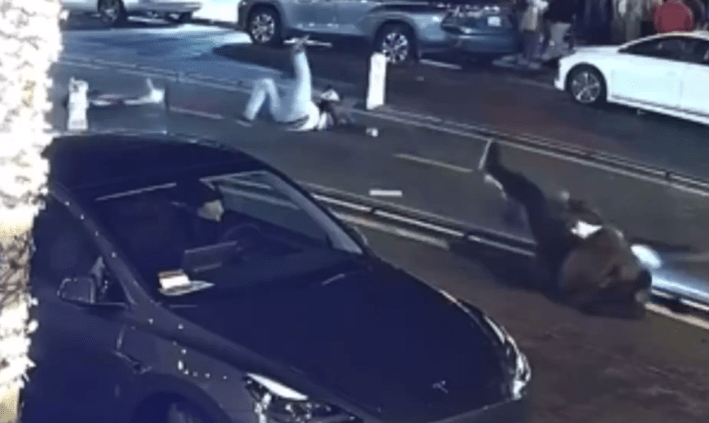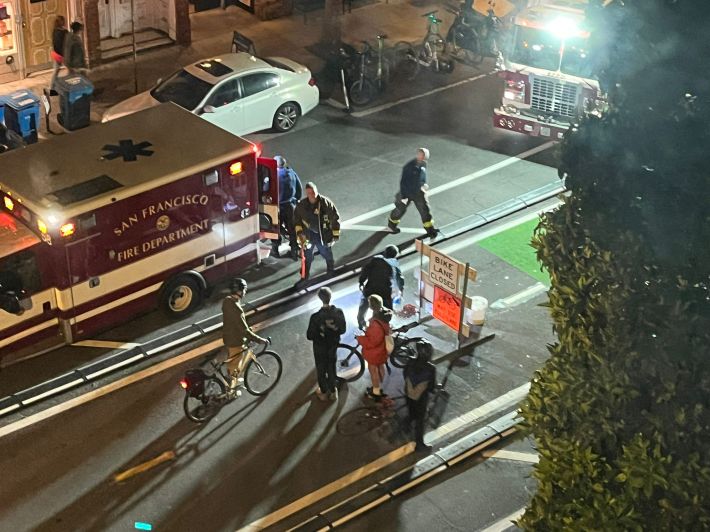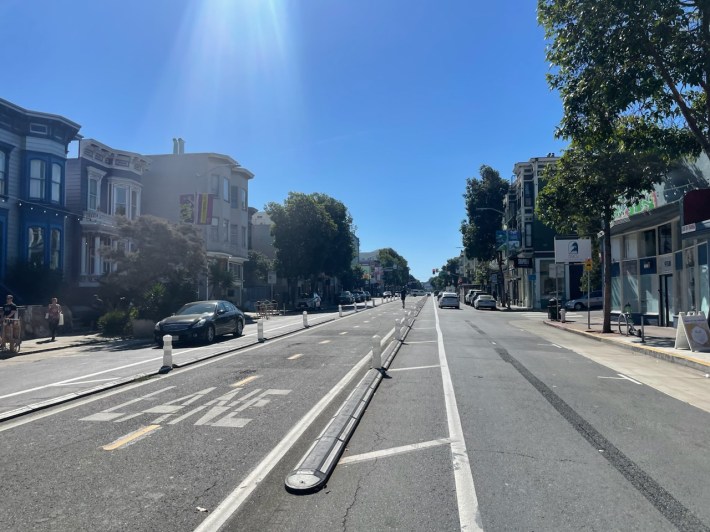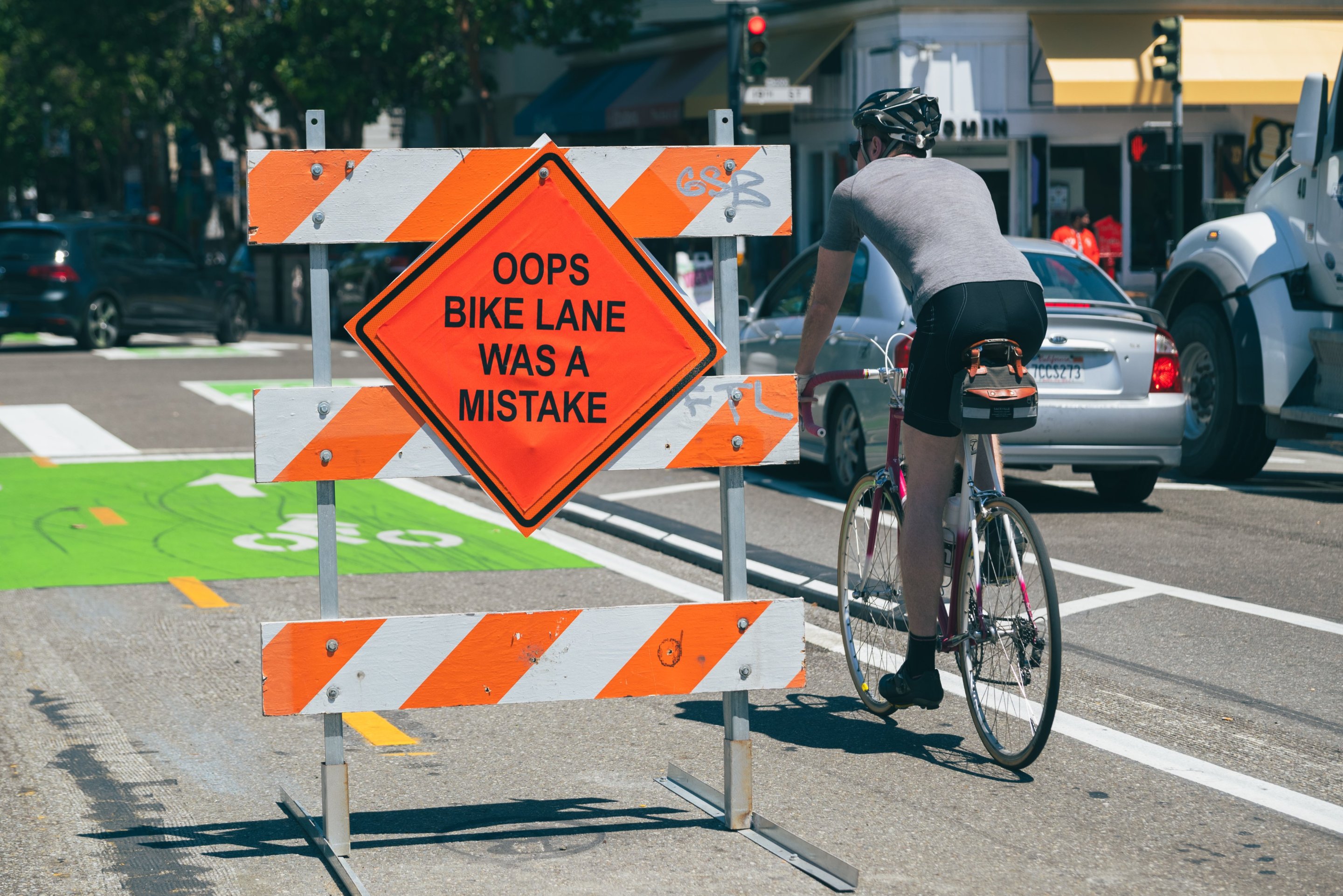SFMTA's official ridership data shows a 53 percent drop in cycling on Valencia Street since a center-running bike lane was installed in April of 2023. The center-running lane, which replaced door-zone painted lanes, was sold as a "better than nothing" compromise on Valencia from 15th to 23rd to prioritize easy car access to local shops while still encouraging cycling (and reducing collisions). But this data, compiled by SFMTA staff in September but withheld from the public, shows it's had the opposite effect.
"This unprecedented decrease in people biking on Valencia Street should be a wake-up call to Mayor Breed and the SFMTA Board of Directors," wrote advocate Luke Bornheimer in a statement sent to Streetsblog.
The results come in stark contrast to the Dutch-style, global-best-practice curbside parking-protected bike lane also installed on Valencia from Market Street to 15th in 2019. These protected lanes, which also replaced door-zone striped lanes, generated a nearly 50 percent increase in bicycle use, along with a great reduction in collisions.
"They should take immediate action to replace the dangerous and unintuitive center bikeway with curbside protected bike lanes, the industry best practice that is proven to increase revenue for local businesses, decrease commercial vacancies, reduce car traffic, increase safety for all people, and help more people shift trips from cars to bikes and other active transportation," added Bornheimer.

The bicycle count data was obtained via a Public Records request made to SFMTA. The agency director, Jeffrey Tumlin, and his staff had promised to present this data publicly by the end of December but then reneged, precipitating the request.
The bicycle counts were obtained by the city using pneumatic tubes placed across the lane. Passing bikes trigger the tubes. This is considered the gold standard for counting bikes and other vehicles by city officials.
The data confirms what advocates already suspected. "We've heard consistent feedback from cyclists that the middle bikeway is unsafe," said Aaron Leifer, Chair of SFMTA's Citizen's Advisory Council, addressing the SFMTA Board last October. "They don't like it. They don't want to use it."
Although official collision data is not yet available, reports continue to trickle in of a heightened number of close calls and collisions between cyclists, motorists, and scooterists attributable to the center-running lane. There have also been at least five cyclists or scooterists injured badly enough to require an ambulance since the new lane was installed. Jian Huang was killed by a motorist while crossing the street at 18th and Valencia in September.

It is now irrefutable the lane is a failure by one of its most important rubrics, encouraging bicycle use, and is in fact worse than the door-zone lane it replaced. It also seems clear it has not improved safety for the few who continue to cycle and scooter on Valencia, at least not over parking protected. It has also failed to placate merchants about parking concerns, who have turned hard against the center-running lane and are demanding its removal.

The center-running design received 13 percent support from the public in SFMTA's three-month outreach process (80 out of 618 responses) even before it was built. It was also harshly criticized by international experts in design and road safety from the Netherlands and Denmark for being contrary to global best practices for safety. Dutch/Danish-style curbside protected bike lanes, by contrast, improve merchant receipts, an effect that's been thoroughly studied and replicated in examples all over the world. For example, after the construction of a curbside protected bike lane on New York City’s 9th Avenue, local businesses saw a 49 percent increase in retail sales, compared to a 3 percent increase on other streets in the borough (Source: NYC DOT).

In Streetsblog's view, if merchants on Valencia really have lost business at a higher rate than the rest of the city, post-pandemic, then the reason is obvious from the new data. It's not primarily because of loss of parking, as many merchants have assumed. The new bike lane has greatly reduced the number of cyclists using the corridor, many of whom used to stop to buy things. Even cyclists who continue to use Valencia now have a more difficult time accessing shops.
"The SFMTA CAC recommends abandoning the current unintuitive and dangerous center-running bicycle lane pilot on Valencia," said Leifer.





